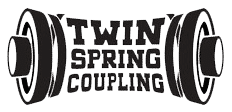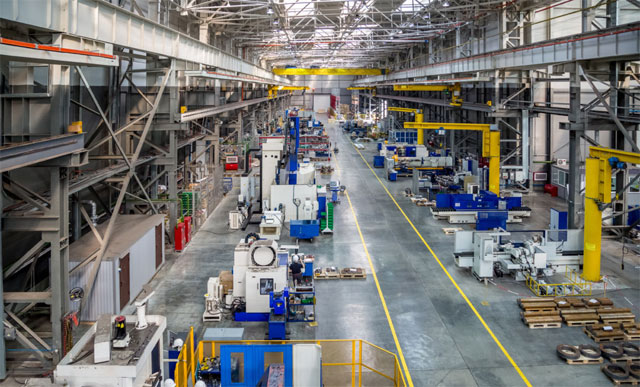The Impact of Coupling Misalignment on Equipment Performance and Reliability
Table of Contents
In the world of industrial machinery and power transmission, coupling misalignment is a critical issue that can significantly affect equipment performance, reliability, and longevity. This problem is particularly relevant for major original equipment manufacturers (OEMs) like Siemens, ABB, and General Electric, who produce and maintain a wide range of industrial equipment.
Understanding Coupling Misalignment
Coupling misalignment occurs when the centerlines of two connected shafts are not perfectly aligned. This misalignment can be:
- Angular: where the shaft centerlines intersect at an angle
- Parallel: where the shaft centerlines are parallel but offset
- Combined: a mixture of both angular and parallel misalignment
Even small degrees of misalignment can lead to significant problems over time, making proper alignment crucial for optimal equipment performance.
The Consequences of Misalignment
Reduced Equipment Lifespan
Misalignment puts additional stress on bearings, seals, and other components, leading to premature wear and failure. This can significantly shorten the lifespan of expensive machinery, increasing maintenance costs and downtime for companies like Caterpillar and John Deere, who rely on the longevity of their equipment.
Increased Energy Consumption
Misaligned couplings create friction and resistance, forcing motors to work harder to maintain the same output. This increased energy consumption not only raises operational costs but also goes against the sustainability goals of companies like Schneider Electric and Emerson Electric.
Vibration and Noise
Misalignment often manifests as excessive vibration and noise. This can lead to:
- Operator discomfort and fatigue
- Potential safety hazards
- Accelerated wear on surrounding components
- Reduced precision in manufacturing processes
Companies like SKF and Timken, known for their bearing and power transmission solutions, understand the critical role proper alignment plays in minimizing these issues.
Detecting and Correcting Misalignment
Modern Alignment Techniques
Advanced laser alignment systems have revolutionized the way misalignment is detected and corrected. These systems, offered by companies like Renishaw and Prüftechnik (now part of Fluke Corporation), provide:
- High precision measurements
- Real-time feedback
- Easy-to-interpret results
- Compatibility with a wide range of equipment sizes and types
Predictive Maintenance
Implementing predictive maintenance strategies using vibration analysis and other condition monitoring techniques can help detect misalignment issues before they cause significant damage. Companies like Honeywell and Rockwell Automation offer sophisticated monitoring solutions that integrate with existing industrial control systems.
The Role of Flexible Couplings
While proper alignment is crucial, the use of flexible couplings can help mitigate the effects of minor misalignment. Manufacturers like Lovejoy (now part of Timken) and Altra Industrial Motion produce a range of coupling solutions designed to:
- Accommodate small amounts of misalignment
- Reduce vibration transmission
- Protect connected equipment from shock loads
- Simplify installation and maintenance procedures
However, it’s important to note that flexible couplings are not a substitute for proper alignment, especially in high-speed or high-load applications.
Economic Impact of Proper Alignment
The financial benefits of maintaining proper alignment are substantial:
- Reduced energy consumption (typically 2-17% savings)
- Extended equipment life (up to 50% longer bearing life)
- Decreased maintenance costs
- Improved product quality due to reduced vibration
- Increased uptime and productivity
For large OEMs like Siemens and ABB, ensuring proper alignment across their product lines and customer installations can lead to significant cost savings and improved customer satisfaction.
Best Practices for Maintaining Alignment
- Regular inspection and realignment schedules
- Proper foundation design and machine installation
- Training maintenance personnel in alignment techniques
- Investing in quality alignment tools and equipment
- Considering alignment during equipment design and selection
- Implementing continuous monitoring systems for critical equipment
The Impact of Coupling Misalignment on Equipment Performance and Reliability Conclusion
The impact of coupling misalignment on equipment performance and reliability cannot be overstated. As industrial processes become more demanding and energy efficiency more critical, proper alignment is essential for maintaining competitive advantage and meeting sustainability goals.
Major OEMs in the industrial equipment sector, recognize the importance of addressing misalignment issues in their products and customer installations.
By focusing on proper alignment techniques, advanced monitoring systems, and innovative coupling designs, these companies are helping to improve equipment reliability, reduce energy consumption, and enhance overall industrial productivity.
As technology continues to advance, we can expect to see even more sophisticated alignment solutions and predictive maintenance strategies emerge, further minimizing the impact of misalignment on industrial operations.
For businesses looking to optimize their equipment performance and reliability, investing in proper alignment practices and technologies is not just a maintenance task—it’s a strategic imperative for long-term success.

